How much does a Quooker tap cost and what are the alternatives?
How much does a Quooker tap cost? We explain what to expect if a hot water tap has caught your eye as well as giving you some alternative products – and prices – to consider
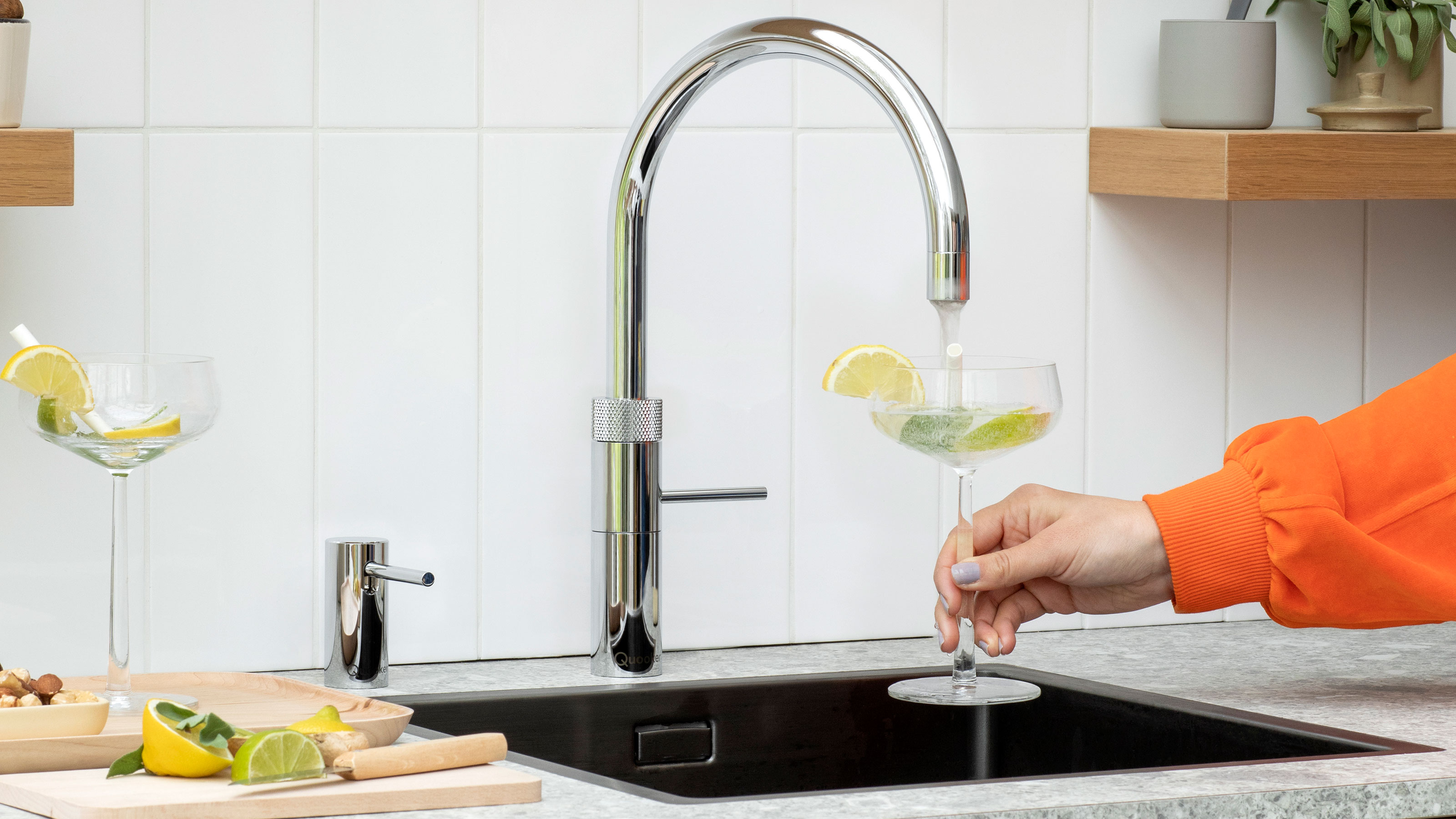
Has the idea of instant boiling water left you asking 'what does a Quooker tap cost?' We are here to take you through the kind of prices you will be faced with if you decide to fit your kitchen with this brand of boiling water tap or one of the many other hot water taps now available.
Hot water taps offer many benefits, including the fact that you will no longer need to find space on your worktops for a kettle. Of course for most people designing a kitchen, their allure lies in the fact that there is no more waiting around for water to boil.
Hot water taps have come on a great deal since they first appeared on the scene — most now offer all kinds of other functions as well, such as filtered cold water and chilled sparkling water. There are also now more safety features than when they were first introduced, designed to remove the worry some people felt about how suitable they would be in households with young children.
What's not to like? For many people the only thing that is a little off-putting is the price of boiling water taps when compared to other types of kitchen brassware. So, just how much more are they than standard taps and are they worth it?
How much does a Quooker tap cost?
Quooker is just one brand of instant hot water tap but for many people it is also the first that springs to mind. It was the very first boiling water tap in the world, invented in 1970 by Henri Peteri.
Quooker taps come in several different models including Flex, Classic, Fusion and Nordic. Each of these models also comes in a variety of styles.
Prices start from £1,150. This includes the 3-litre tank that holds the boiling water and sits beneath the sink. For an extra £270 you can get a 7-litre tank of instant boiling water.
If you were to specify a COMBI tank, you would need to pay an extra £300 on top of the price of your tap, but you would get 7-litres of instant boiling water or 15-litres of hot water (60°C) all from a cold feed.
And, finally, if you were to add on the Quooker CUBE, for £1,150, you would also be able to dispense sparkling and chilled water from your tap.
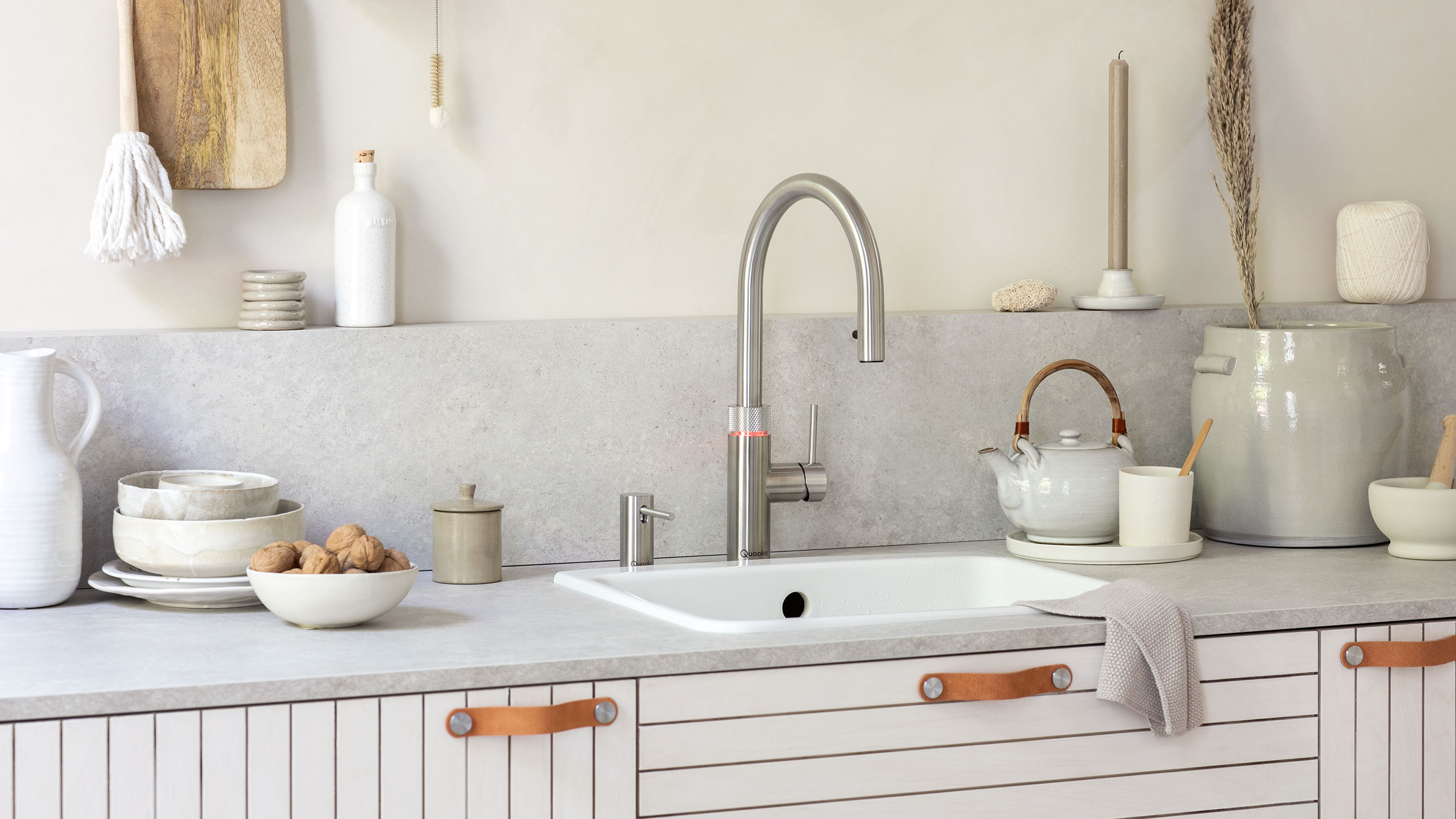
How much do Quooker alternatives cost?
Since its invention, there have been many other instant hot water taps introduced into the market. Qettle, Franke, InSinkerator, Fohen and Caple, to name just a few, all now offer this type of tap.
Here's a run-down of what some of the products from these brands will cost:
- Qettle taps offer filtered and boiling water instantly and start from £495, although they also offer the Qettle Mini which costs from just £395.
- Franke's Minerva Helix 4-in-1 Electronic tap costs £1,878.
- While InSinkErator offer a wide range starting from £324 for their GN1100 Novara Steaming Hot Water Tap which is designed to sit alongside your main tap. It dispenses instant filtered hot water and comes with a 2.5-litre tank and filter.
- Fohen offer a large range of instant hot water taps, including the Futura Fizz which dispenses both standard hot and cold water as well as instant filtered boiling water, filtered sparkling and chilled filtered water from a single spout. It costs £1,999. At the cheaper end of the scale, their other boiling water taps start at £799. If you hurry, they have a sale on their products until the end of March.
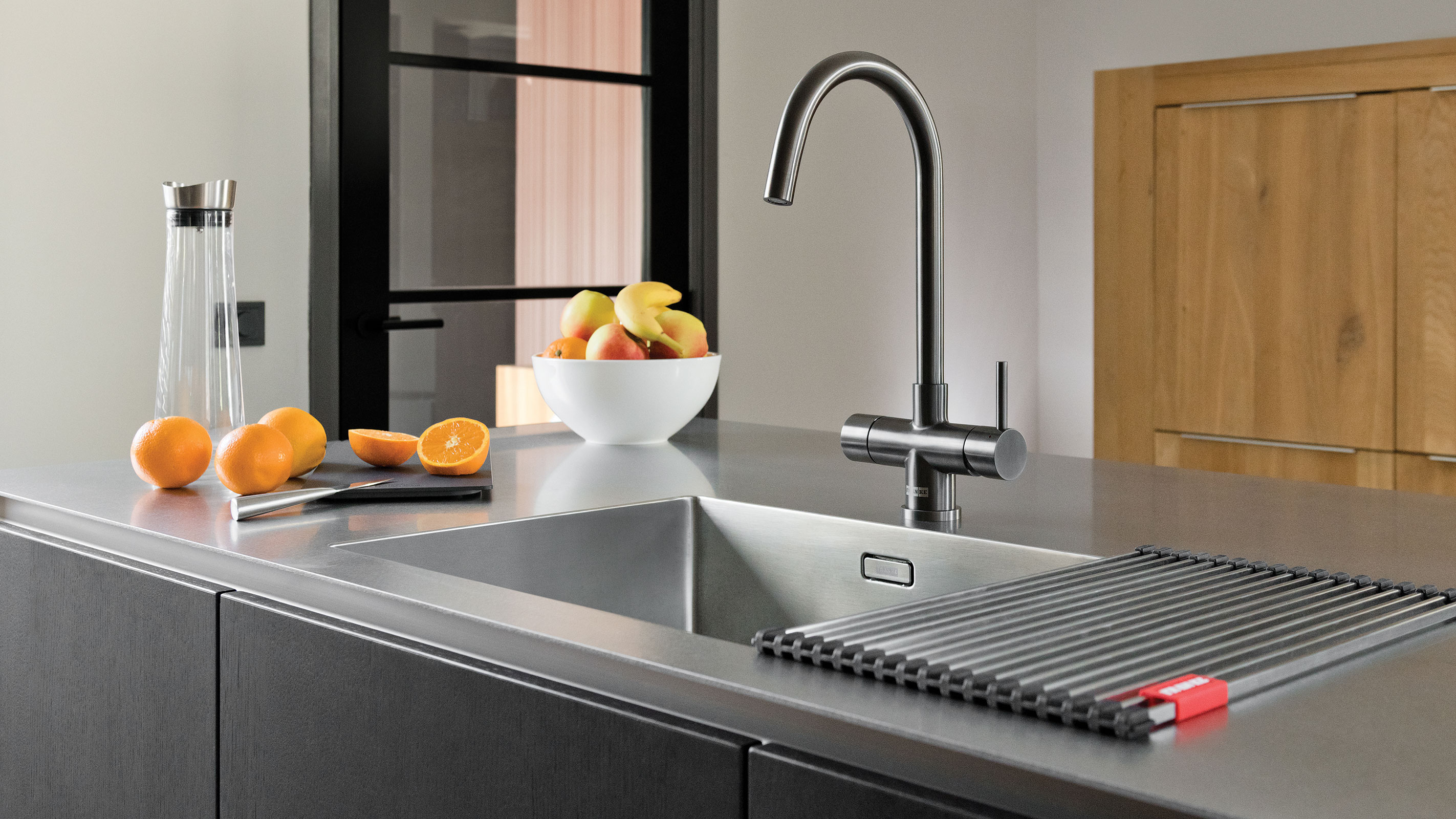
How much do Quookers cost to run?
Another concern for some people considering fitting a Quooker boiling water tap or hot water tap from another brand, is how much they might cost to run.
"Unlike the energy-guzzling kettle, Quooker taps use very little electricity and give impressive energy-saving results," says Stephen Johnson, Managing Director at Quooker UK.
"Thanks to its advanced technology, it takes only 10 watts to keep water in the tank at 110°C, while the average kettle uses 2,200 watts to boil 1.7 litres of water. This means not only will you save time with instant boiling water available within seconds, but you’ll also be saving money on your energy bills."
“The running cost varies depending on usage and energy costs,” advises Anne Kaarlela, marketing communications manager for InSinkErator. “The InSinkErator boiler tank is very efficient as it keeps the water temperature up constantly, as opposed to cooling off then heating rapidly like a kettle, which wastes a lot of energy."
"The environmental benefits of a boiling water tap are also notable," says Stephen Johnson. "Dispensing the right amount of water needed at any given time, boiling water taps help reduce water wastage. Gone are the days of overboiling the kettle only to pour away unused water.
"At Quooker, we have also introduced the CUBE which dispenses filtered, chilled and sparkling water directly from the tap. The average UK household uses on average 360 single-use plastic bottles per year. Our instant, always-fizzy water, with canisters that can be recycled and re-used, is a game-changer," he suggests.
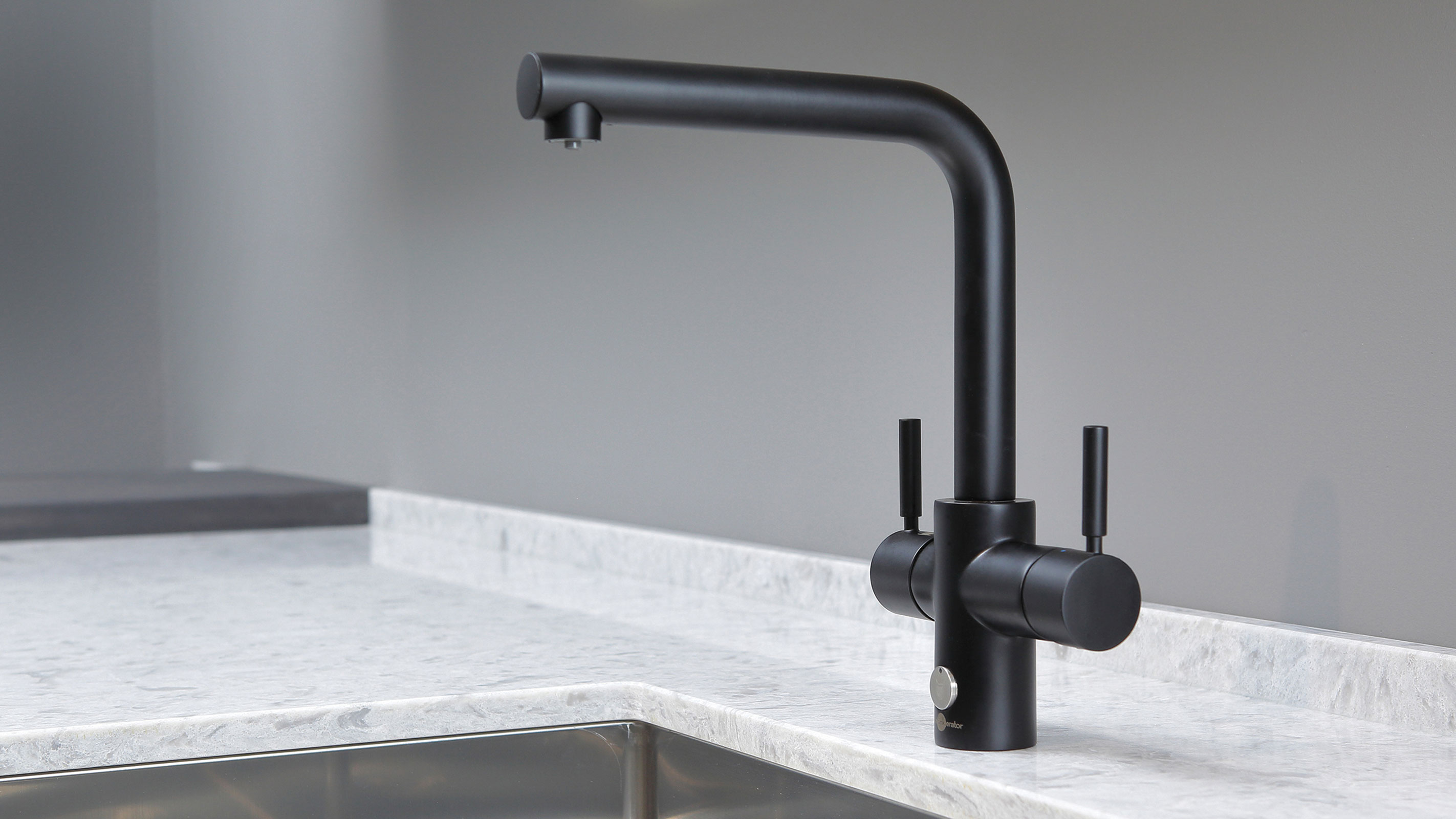
How do boiling water taps work?
Boiling water taps draw their water from a tank, which is usually located beneath the sink. This tank is connected to the mains water supply.
Water is heated and stored in the tank and when boiling water is drawn off, cold water flows back into the tank at the same time and is heated automatically.
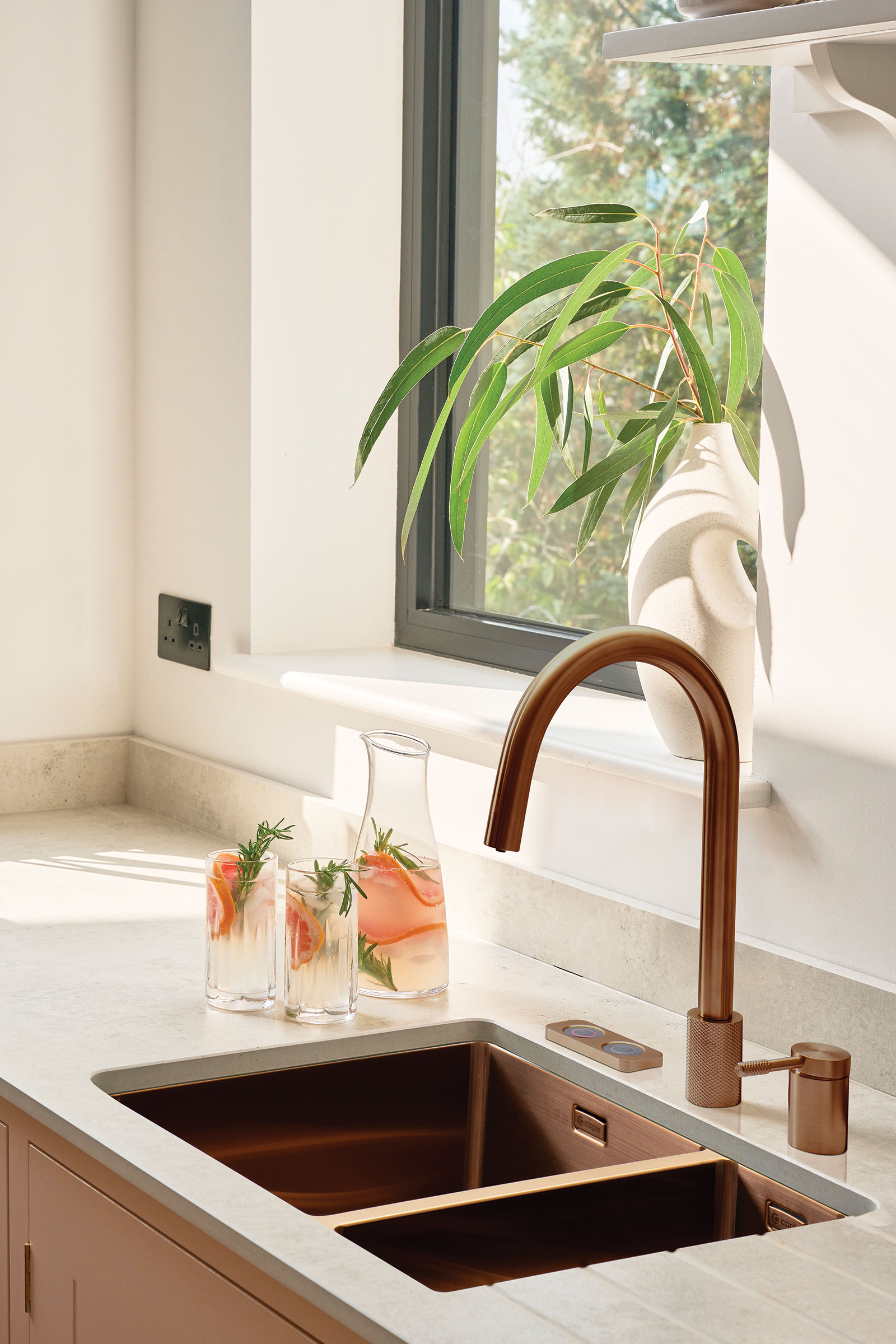
Can I fit a boiling water tap myself?
It is possible for most competent DIYers to fit a boiling water tap themselves — most come with really detailed installation guides. This could be one means of saving money when introducing a hot water tap.
That said, installation services are also offered by many manufacturers — InSinkErator, for example, offer an instant hot water tap installation service for £180.
Get the Homebuilding & Renovating Newsletter
Bring your dream home to life with expert advice, how to guides and design inspiration. Sign up for our newsletter and get two free tickets to a Homebuilding & Renovating Show near you.
Natasha was Homebuilding & Renovating’s Associate Content Editor and was a member of the Homebuilding team for over two decades. In her role on Homebuilding & Renovating she imparted her knowledge on a wide range of renovation topics, from window condensation to renovating bathrooms, to removing walls and adding an extension. She continues to write for Homebuilding on these topics, and more. An experienced journalist and renovation expert, she also writes for a number of other homes titles, including Homes & Gardens and Ideal Homes. Over the years Natasha has renovated and carried out a side extension to a Victorian terrace. She is currently living in the rural Edwardian cottage she renovated and extended on a largely DIY basis, living on site for the duration of the project.

